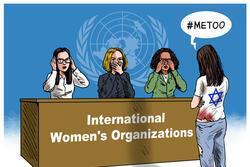Louis Borgenicht
Louis Borgenicht Describes Working Life atthe Turn of the Century
Background: Louis Borgenicht immigrated to the United States in 1889 with experience buying and selling fabric and clothing. Eventually Borgenicht became a leader in the girls’ clothing industry, owning several factories in multiple states. He was also a philanthropist in the New York Jewish community. In 1942 he wrote a memoir about his life called the “Happiest Man” from which these excerpts are taken.
In this excerpt, Louis Borgenicht reflects on his experience establishing his own business soon after arriving to the United States.
In the old days labor did not organize and fight for higher wages and shorter hours. Everybody wanted to work hard, and as long as flesh could endure. They wanted to because through this hard work there was for the humblest employee the chance of a great future.
[…]
This country was not built by labor’s concern for hours or wages, nor by businessmen’s fears for their money. It was built by work and faith. I saw it with my own eyes. And I saw that that work and that faith were based on one single thing—economic opportunity.
Source: Friedman, Harold. The Happiest Man: The Life of Louis Borgenicht As Told to Harold Friedman. G.P. Putnam's Sons, New York, 1942. p. 365.
Discussion Questions about Louis Borgenicht’s Description of Working Life at the Turn of the Century
- Louis Borgenicht was also a relatively new immigrant. How did his experience differ from that of other immigrants? In what ways was it similar?
- What does Louis Borgenicht say about a worker’s opportunity to have a “great future?” Do you agree? Why or why not?
- What does Louis Borgenicht mean when he says “labor did not organize?” What is organizing?
- Why did some workers organize into unions?
- What is Louis Borgenicht’s opinion about labor unions and organizing?
Louis Borgenicht Describes Celebrating an Employee’s Wedding
Background: In this excerpt, Jewish factory owner Louis Borgenicht describes a wedding for one of his employees that was held at the winter home he built for his family in 1913. His family also owned a country estate in the Catskill Mountains that they lived in during the summer.
This last was a proud house, but we were humble. Just before the building was completed, Regina informed me that the daughter of one of the small contractors who handled work for me was being married.
“She can’t afford the kind of a wedding she’d like,” said my wife. She hesitated, then went on firmly. “Couldn’t we have it here, as sort of a housewarming?”
To me it seemed no festive occasion could match that wedding as an expression of joy and gratefulness in our hearts. The ceremony was held in the living room, to the music of fiddlers banked on the gallery above.
Source: Friedman, Harold. The Happiest Man: The Life of Louis Borgenicht As Told to Harold Friedman. G.P. Putnam's Sons, New York, 1942. pp.276-277
Discussion Questions about Louis Borgenicht’s Description of an Employee’s Wedding
- What does this passage tell you about Louis Borgenicht’s home life? How is his home life different from the lives of most factory workers at this time?
- What does this passage tell you about Louis Borgenicht’s relationship to the people he employs?


